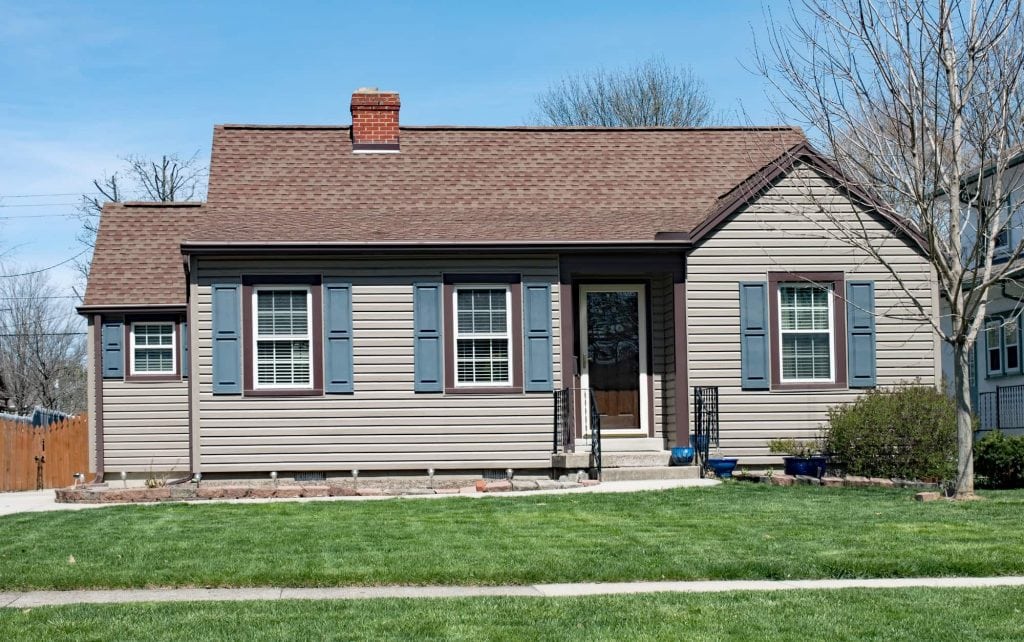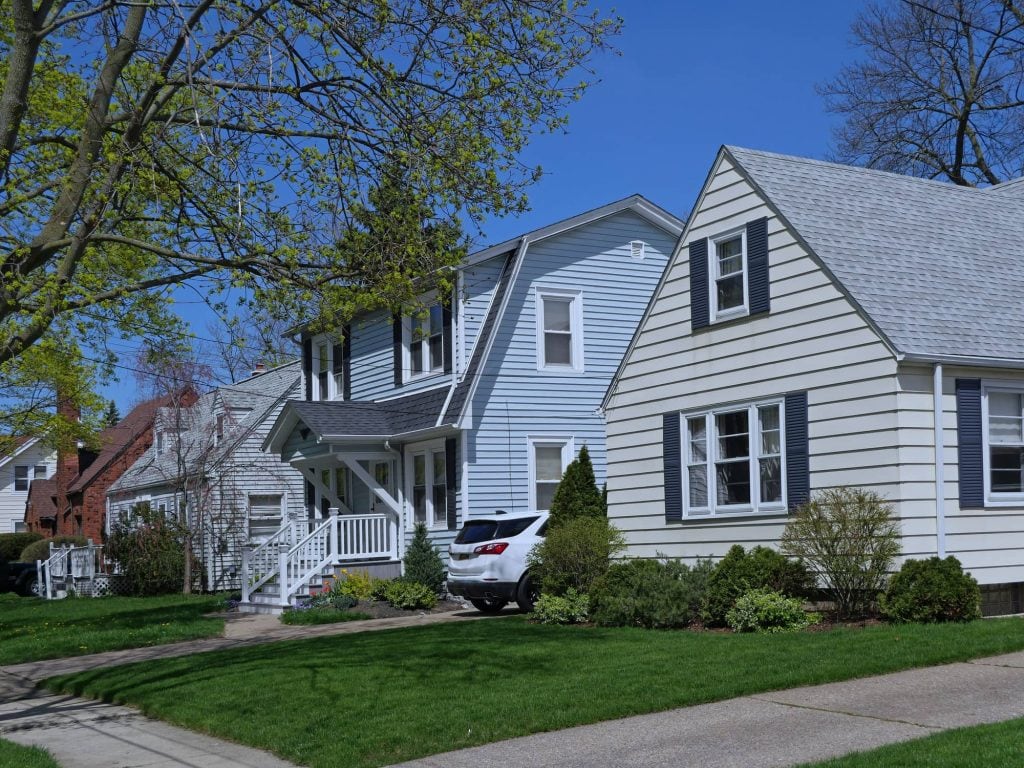Metal siding has redefined the concept of building exteriors with its wide variety of applications and durability. From industrial applications to residential projects, metal siding panels, particularly corrugated metal panels, are an economical option that offers design flexibility and aesthetic appeal.
From its aesthetic appeal to its overall cost and maintenance, let’s look at what makes metal siding an excellent option for some homes and why there may be better choices for others.
Ready to discover if it is the best house siding type for you? Keep reading our guide about the definition, pros, and cons of metal siding.
What Is Metal Siding?
Metal siding panels are made from durable materials like aluminum, steel siding, or even stainless steel. These metal wall panels shield the structure while providing clean lines and a modern design.
Historically, traditional siding materials such as wood siding were the preferred choice for builders. With the progression of building materials, metal siding emerged as a popular choice. Its durability, minimal maintenance requirements, and variety of colors offered a refreshing alternative.
Pros of Metal Siding
Metal siding, particularly corrugated metal siding and metal roofing panels, offers several advantages that make it a top pick for many builders and homeowners.

Durability and Longevity
One of the standout features of metal siding is its durability. Metal sidings, especially those with a galvanized finish, can last decades with little to no wear and tear. They’re resilient against extreme weather conditions, whether harsh sunlight, heavy rain, or strong winds. The non-combustible nature of metal also means it doesn’t ignite easily, adding a layer of protection against potential fires.
Low Maintenance
A significant upside to installing metal siding is its low maintenance requirements. Metal stands firm, unlike wood, which might rot, warp, or become prey to termites. It doesn’t harbor mold or rust easily, especially when treated with advanced paint technology.
Energy Efficiency
Metal wall panels have inherent energy-saving properties. Their insulating characteristics help maintain indoor temperatures, reducing the need for heating or cooling systems to work overtime. This conserves energy and translates to significant cost savings in utility bills.
Fire Resistance
Safety is paramount in any construction project, and metal siding scores high in this department. It is non-combustible and doesn’t catch fire easily, offering superior protection against potential fire hazards.
Aesthetic Versatility
With a wide range of colors, from classic brown and chestnut brown to more vibrant hues like leaf green, desert beige, and terra-cotta colonial red, metal siding allows homeowners and builders immense design flexibility.
The range of colors provide abundant options whether you’re aiming for a rustic look with corrugated steel siding or a sleek modern design with flat metal surfaces.
Cons of Metal Siding
While metal siding boasts numerous advantages, it’s essential to consider its limitations.
Initial Cost
Metal siding, especially premium color varieties or those with a galvalume material, can come with a heftier price upfront than other siding options. However, considering its durability and low maintenance, it is often a cost-effective solution in the long run.
Denting and Noise
Certain types of metal siding, particularly those with thinner panel profiles, can be prone to denting. Also, metal can be noisier than other materials during heavy rainfall or hailstorms.
Susceptibility to Scratches and Fading
Over time, especially under harsh weather conditions, metal siding can experience fading. Scratches, if deep enough, reduce its visual appeal.
Installation and Maintenance Tips for Metal Siding
While metal siding offers a range of benefits, from its aesthetic appeal to its durability, getting the most out of it largely depends on its installation and maintenance.

Hiring a Professional vs. DIY Installation
Metal siding installation is more intricate than it appears. The alignment of panels, ensuring proper fastener attachment spacing, and addressing potential performance issues like oil canning requires expertise.
While a wide range of tutorials are available, a DIY approach may lead to errors that affect the siding’s longevity and functionality. A proper installation ensures maximum energy efficiency and optimal performance against extreme weather conditions.
While you may feel the temptation to install it yourself, seeking help from a professional ensures your metal siding serves its purpose effectively.
Regular Cleaning and Maintenance
Keeping your metal siding clean enhances its curb appeal and ensures longevity. Aim to clean your siding at least once a year or more frequently if your building is in an area with high pollution or dust levels.
Periodic inspections for scratches, dents, or any signs of corrosion are essential. Catching these issues early and addressing them can prevent more significant, costlier problems down the road.
Paint and Coating Considerations
Despite the durability of metal, over time, its paint might start to fade or chip. A repainting or recoating every few years helps maintain its fresh look and provides additional protection against corrosion.
When choosing paint or coatings, opt for high-quality products, preferably those with UV protection. This ensures the color remains vibrant and enhances the siding’s lifespan.
Key Takeaways
Metal siding is a durable, aesthetically versatile, and energy-efficient option for buildings. Its pros, such as longevity, low maintenance, and aesthetic appeal, make it a standout choice.
However, considerations like initial cost and potential for dents or noise need to be weighed. Whether you’re eyeing it for its modern design, energy-saving benefits, or its wide range of colors, ensure you’re making an informed decision based on your building’s needs and your personal preferences.
If you’re looking to buy a property with metal siding, whether residential or commercial, make a custom home search and use our filters to search for specific keywords. Need additional assistance? Contact a local eXp agent for expert guidance.
FAQs: Metal Siding
Let’s highlight some of the most commonly asked questions about metal siding.
Is metal siding expensive?
While metal siding can have a higher upfront cost than other materials, its durability and minimal maintenance often make it a cost-effective option in the long run, no matter how many square feet you need to cover.
Is metal siding cheaper than vinyl siding?
Generally, vinyl siding tends to be less expensive initially than metal siding. However, metal might offer better value over time when factoring in longevity and maintenance.
Is metal siding a good idea?
Absolutely! Its durability, energy efficiency, and aesthetic versatility make it a worthy consideration for many building projects.
Is metal siding the same as steel siding?
Not necessarily. While steel is a type of metal, metal siding can be made from various metals, including aluminum and stainless steel.
Does metal siding add value to a home?
Metal siding boosts the value of the home due to factors like durability, modern aesthetic, and energy efficiency.
What is the least expensive siding option?
Vinyl is often considered the most affordable siding option, though prices vary based on quality and brand.
Do you need sheathing under metal siding?
Yes, sheathing provides additional insulation and ensures a flat, even surface for the siding.
Does metal siding make a house hotter?
No, with proper insulation, metal siding can reflect heat, helping to regulate indoor temperatures.
Can you put metal over wood siding?
Yes, metal can be installed over existing wood siding, though ensuring the wood is in good condition is crucial.
How do you attach metal siding to a house?
Metal siding is typically attached using screws, but the specific method can vary based on the type of metal and the manufacturer’s recommendations.
Should I choose vertical or horizontal metal siding?
Both have their merits. Vertical siding often sheds water better and is commonly used for commercial buildings, while horizontal siding offers a more traditional appearance.
Can you put metal siding on plywood?
Yes, metal siding can be installed over plywood, provided the plywood is flat and in good condition.
How often does metal siding need to be replaced?
Proper maintenance means metal siding can last several decades, often outlasting other siding materials.





